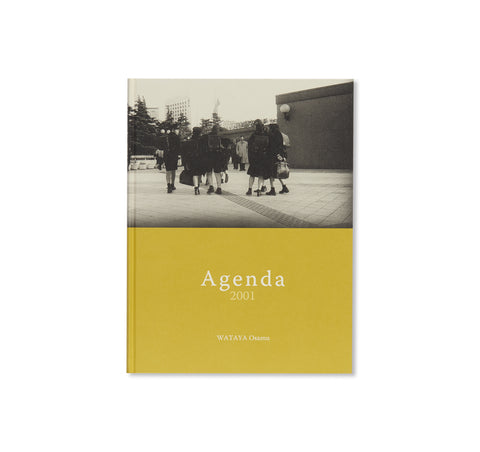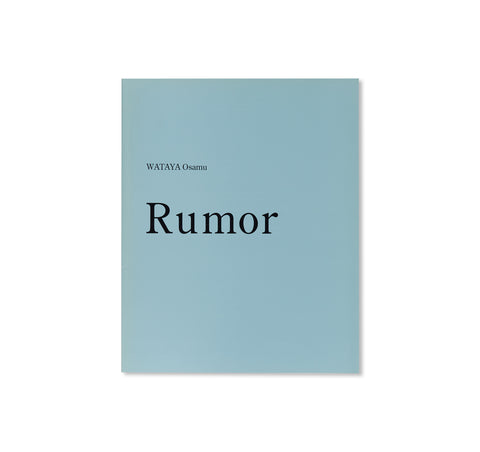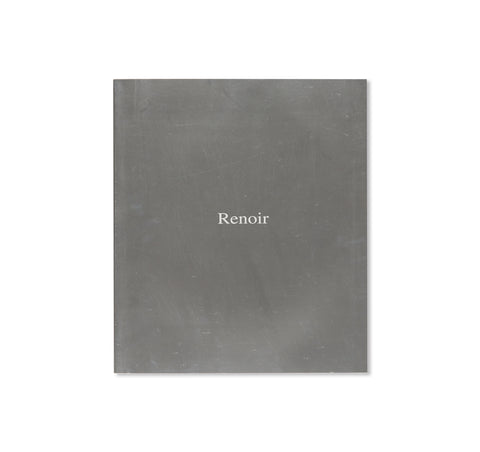CHILDHOOD by Osamu Wataya [SOFTCOVER]
日本人写真家、綿谷修の作品集。作者はある時期から、写真の特異性や純粋性を追求することをやめ、未熟さや軽さ、ユーモアやノスタルジーが写真にとって重要な要素であることを追求し始めた。一枚一枚の写真が他のイメージと共鳴し、無数のトーンで世界を満たしている。それは、世界を表すと同時に、「自分」を表す色調なのかもしれないと感じさせている。
本書には初期の「アムステルダム」シリーズから最新の「ケイパビリティ」シリーズまで、ほとんどが初公開の写真が収録された。これは単純に、見たことがあるかないかを問わず、すべての作品を見直した結果完成したのだと作者は説明する。また、一冊を構成する4つのセクションは、場所や時間、被写体などそれぞれが一見無関係のように見えるが、それぞれの写真が微妙に、複雑に響き合っていることに気づかされる。『CHILDHOOD』が単なる過去の回顧ではなく、遥か彼方に広がる未知の過去との出会いを求める永遠の願望であるということを示唆しているともいえるだろう。
加えて、本書においては写真における「私-写真-世界」という概念を感じさせない。編集者としての目線で写真を探求し、戦後日本の写真におけるモダニズムと批評的に向き合い、乗り越えようとする写真家たちの本を数多く出版してきた作者だからこそ、モダニズムの直線的思考に根ざした在り方を避けたのだろう。
死と同じように、幼年期は我々の経験の外側にあるものだ。しかし、綿谷氏の写真を見ていると、幼少期の記憶を持たない、溢れるような意識を体験することができる。ロバとアムステルダムの運河、オホーツク海の小さな家、氷河、ウクライナの少年と猫、女性のおしりを覗き込む男、異郷と故郷、過去と現在、それらが微妙に響き合うたった一瞬を作者ならではの感覚で捉えている。
※本書はデッドストック書籍のため、経年劣化による変色やダメージがございます。あらかじめご了承ください。
Official Press Release:
The four sections that comprise this book are seemingly unrelated- without any ties by place, time, or subject. Nonetheless, they allow the viewer to realize that each photograph subtly and intricately resonates against one another. Since a certain point in time, Osamu Wataya has resigned from pursuing the singularity and purity of photography, and instead has directly acknowledged the idea that immaturity and lightness, as well as humor and nostalgia, are important factors for photography. Each and every photograph resonates in harmony with the other images, filling the world with a myriad of tones. Perhaps it is those tones that represent “oneself” at the same time as representing the world.
“CHILDHOOD” shows no trace of the notion of “me-photography-the world” firmly rooted in the linear thinking of Modernism in photography. However, in the process of creating this book, Wataya’s sixth one, he was most likely faced with frustration towards the overpowering curse that the school of thought bears. Throughout his career, Wataya has explored photography through the eyes of an editor in addition to being a talented photographer himself. Both roles have required him to critically confront Modernism in Japanese post-war photography as well as publish numerous books of photographers who have struggled to overcome it. Through his work with these photographers, it is without a doubt that Wataya fully experienced just how deeply rooted and entrenched Modernism is. This however, most likely reached a limit within himself.
Most of the photographs in this book, from the “Amsterdam” series taken at the beginning of Wataya’s career to his most recent ones in the “Capability” series, have never been presented before. According to Wataya, this was simply a result of reviewing all of his works, regardless of whether they had been seen before or not. There is no attempt here by Wataya to convey an autobiographical narrative that describes his career as a photographer, nor is there a problem consciousness related to contemporary theory. There is no way for us to tell what kinds of emotions were evoked within the artist. However, what remains certain is that “CHILDHOOD” is not a simple retrospective of the past but a perpetual aspiration to encounter an unknown past that extends far beyond.
Like death, childhood is something that lies external to our experiences. Nevertheless, when looking at Wataya’s photographs, one can experience an overflowing consciousness that doesn’t hold any memories of childhood. Wataya’s vulnerable senses capture images of donkeys and the canals of Amsterdam, a little house by the Sea of Okhotsk, glaciers, a Ukrainian boy and cat, a man who is peering at a woman’s hips, foreign lands and hometowns, and the past and present, all of which subtly reverberate against one another and come together for just this one time.
※Please note that there is visible damage and discoloration due to age.
![CHILDHOOD by Osamu Wataya [SOFTCOVER]](http://twelve-books.com/cdn/shop/products/2011251980.jpg?v=1621319999)
![CHILDHOOD by Osamu Wataya [SOFTCOVER]](http://twelve-books.com/cdn/shop/products/2011251982.jpg?v=1621319999)
![CHILDHOOD by Osamu Wataya [SOFTCOVER]](http://twelve-books.com/cdn/shop/products/2011251983.jpg?v=1621319999)
![CHILDHOOD by Osamu Wataya [SOFTCOVER]](http://twelve-books.com/cdn/shop/products/2011251984.jpg?v=1621320000)
![CHILDHOOD by Osamu Wataya [SOFTCOVER]](http://twelve-books.com/cdn/shop/products/2011251985.jpg?v=1621320000)
![CHILDHOOD by Osamu Wataya [SOFTCOVER]](http://twelve-books.com/cdn/shop/products/2011251986.jpg?v=1621320000)
![CHILDHOOD by Osamu Wataya [SOFTCOVER]](http://twelve-books.com/cdn/shop/products/2011251987.jpg?v=1621320000)
![CHILDHOOD by Osamu Wataya [SOFTCOVER]](http://twelve-books.com/cdn/shop/products/2011251988.jpg?v=1621320000)
![CHILDHOOD by Osamu Wataya [SOFTCOVER]](http://twelve-books.com/cdn/shop/products/2011251989.jpg?v=1621320000)
![CHILDHOOD by Osamu Wataya [SOFTCOVER]](http://twelve-books.com/cdn/shop/products/2011251990.jpg?v=1621320001)
![CHILDHOOD by Osamu Wataya [SOFTCOVER]](http://twelve-books.com/cdn/shop/products/2011251991.jpg?v=1621320001)
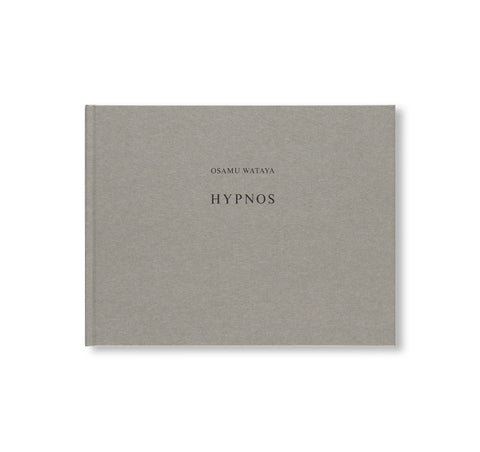
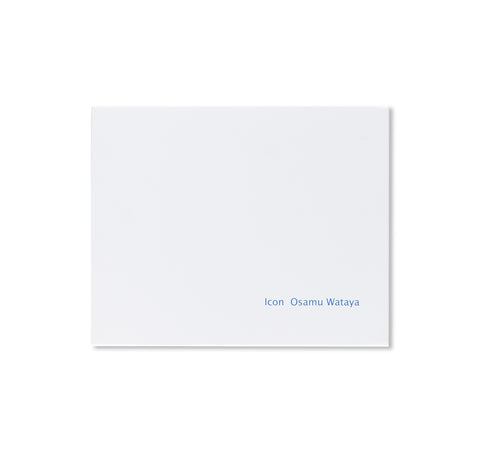
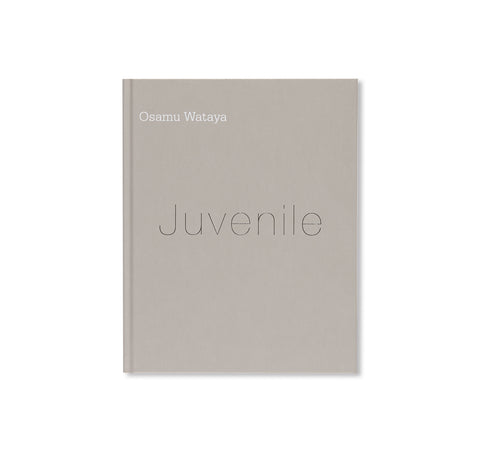
![CHILDHOOD by Osamu Wataya [HARDCOVER]](http://twelve-books.com/cdn/shop/products/2011251980_c213dc28-7db5-4459-9af8-efb5fdddf7ed_large.jpg?v=1621320020)
